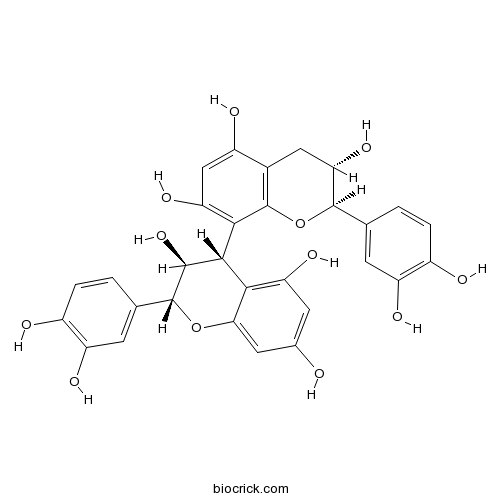Rosa odorata var. gigantea
Rosa odorata var. gigantea
1. The products in our compound library are selected from thousands of unique natural products; 2. It has the characteristics of diverse structure, diverse sources and wide coverage of activities; 3. Provide information on the activity of products from major journals, patents and research reports around the world, providing theoretical direction and research basis for further research and screening; 4. Free combination according to the type, source, target and disease of natural product; 5. The compound powder is placed in a covered tube and then discharged into a 10 x 10 cryostat; 6. Transport in ice pack or dry ice pack. Please store it at -20 °C as soon as possible after receiving the product, and use it as soon as possible after opening.
Natural products/compounds from Rosa odorata var. gigantea
- Cat.No. Product Name CAS Number COA
-
BCN6316
Procyanidin B323567-23-9
Instructions

Developmental transcriptome analysis of floral transition in Rosa odorata var. gigantea.[Pubmed: 29736762]
Expression analyses revealed that floral transition of Rosa odorata var. gigantea is mainly regulated by VRN1, COLs, DELLA and KSN, with contributions by the effects of phytohormone and starch metabolism. Seasonal plants utilize changing environmental and developmental cues to control the transition from vegetative growth to flowering at the correct time of year. This study investigated global gene expression profiles at different developmental stages of Rosa odorata var. gigantea by RNA-sequencing, combined with phenotypic characterization and physiological changes. Gene ontology enrichment analysis of the differentially expressed genes (DEGs) between four different developmental stages (vegetative meristem, pre-floral meristem, floral meristem and secondary axillary buds) indicated that DNA methylation and the light reaction played a large role in inducing the rose floral transition. The expression of SUF and FLC, which are known to play a role in delaying flowering until vernalization, was down-regulated from the vegetative to the pre-floral meristem stage. In contrast, the expression of VRN1, which promotes flowering by repressing FLC expression, increased. The expression of DELLA proteins, which function as central nodes in hormone signaling pathways, and probably involve interactions between GA, auxin, and ABA to promote the floral transition, was well correlated with the expression of floral integrators, such as AGL24, COL4. We also identified DEGs associated with starch metabolism correlated with SOC1, AGL15, SPL3, AGL24, respectively. Taken together, our results suggest that vernalization and photoperiod are prominent cues to induce the rose floral transition, and that DELLA proteins also act as key regulators. The results summarized in the study on the floral transition of the seasonal rose lay a foundation for further functional demonstration, and have profound economic and ornamental values.


